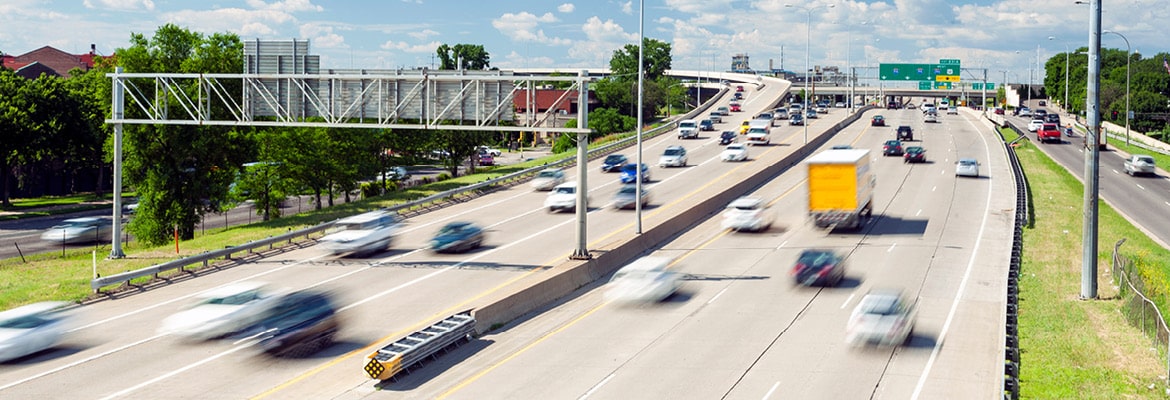Author(s)
Every day, fleet vehicles cross our nation’s highways, delivering goods, transporting people and keeping our economy moving. Yet, the operation of these vehicles is not without risk. Accidents involving fleet vehicles can have significant repercussions, from human injury and loss of life to financial costs and damage to a company’s reputation. The causes of these accidents are often multifaceted, ranging from driver fatigue and distracted driving to poor vehicle maintenance and aggressive behavior on the road.
In this blog, we’ll delve into these common accident causes in more detail and offer five specific tips and best practices for improving fleet safety.
Common causes of accidents related to fleet vehicles
- Driver fatigue: Long hours on the road can lead to drowsiness and slower reaction times, increasing the likelihood of accidents.
- Distracted driving: Texting, eating, or engaging in other activities that take a driver’s attention away from the road can have fatal consequences.
- Poor vehicle maintenance: Neglecting routine inspections and maintenance can result in mechanical failures and accidents.
- Speeding: Exceeding the speed limit increases the risk of accidents and makes them more severe when they occur.
- Aggressive driving: Tailgating, weaving in and out of traffic and other behaviors can lead to collisions and other incidents.
Five specific tips and best practices for fleet safety
1. Implement a comprehensive driver training program
A well-rounded driver training program should include courses in defensive driving techniques and vehicle-specific training, like refresher classes on equipment operation and staying up-to-date on best practices. Such courses enhance driver safety, resulting in fewer accidents and a more productive workflow.
In addition, keeping your drivers up to speed on traffic laws and regulation updates can reduce the risk of violations that require significant time and money to resolve. The Federal Motor Carrier Safety Administration (FMCSA) offers resources for drivers to review on a routine basis, ensuring they stay updated on the latest changes.
2. Establish and enforce a strict driving policy
Create a driving policy that emphasizes zero tolerance for distracted driving and encourages drivers to take breaks and rest when needed. Also set realistic expectations for delivery times to avoid speeding, violations and accidents.
Some fleet companies consider efficient route planning to be an integral part of their safety program. By setting up routes for each driver to follow, not only are you reducing the amount of wear and tear on the vehicle and time spent on the road, but you’re also reducing the risk of potential accidents.
3. Regularly maintain and inspect fleet vehicles
Fleet maintenance is a critical component of driver safety and can save lives. By completing inspections of the vehicles, including tires, interior and exterior lights, brakes and more, you’re greatly reducing the risk of accidents. In fact, in 2022, 622 people died on the road due to tire-related crashes.
When the need for repair is identified, one of the most important steps you can take is to fix the issue immediately to keep your vehicles safe and operating effectively. It’s also important to keep detailed records of maintenance and repairs to ensure accountability.
4. Utilize GPS tracking and telematics technology
Implementing telematics significantly improves vehicle health, routing and even driver behavior. By monitoring your drivers in real time through GPS tracking and telematics, fleet managers can identify areas for improvement and provide feedback and coaching to drivers. This technology can also be used to reward safe driving behavior.
Moreover, leveraging telematics can reduce the number of accidents on the road. Insights provided by the Lytx Driver Safety Program analyzed 221 billion miles of driving data, revealing that driving improved by 29%. In addition, the collisions per 1 million miles driven decreased by 23.1% in comparison to 2019.
5. Encourage a culture of safety within the company
Fostering a culture of safety starts with open communication between drivers and management. Share safety goals and progress with the team and reward safe driving behavior to reinforce its importance.
In addition, by building trust and communication, drivers are encouraged to report possible safety issues and are more likely to improve their behavior behind the wheel.
Build a safer fleet
The importance of a safe fleet cannot be overstated. By implementing these fleet safety tips and best practices, companies can maintain healthy fleets and reduce the number of accidents and mishaps that occur on the road. Prioritizing safety in all aspects of fleet management is not only suitable for your drivers, but it also improves your bottom line.

About Montway Auto Transport
Montway Auto Transport is one of the nation’s leading auto transport brokers with over 16 years of experience. With expertise in arranging single and multi-unit shipping, our carrier network of 30k+ can move your fleets across the state or the country. Visit Montway.com/logistics or call 888-998-4161 to learn more about our fleet shipping services.








